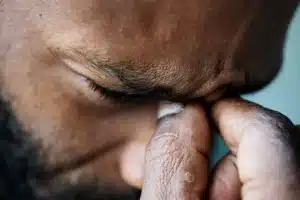Understanding the Fawn Trauma Response: People-Pleasing as Survival
The fawn response is a lesser-known but deeply impactful trauma response in which individuals prioritize others’ comfort and approval to avoid conflict, criticism, or harm. Unlike the fight response, flight response, or freeze response, fawning centers on appeasing others—often at the cost of one’s own needs and authentic self.
First described in detail by Pete Walker, the fawn trauma response is especially common among those who experienced childhood trauma or relational trauma, such as growing up with unpredictable caregivers or enduring childhood abuse. For these individuals, people-pleasing becomes a survival strategy—a way to create a sense of safety in stressful situations or with an abuser.
How People-Pleasing Becomes a Coping Mechanism
When the nervous system learns that conflict or self-assertion may lead to danger, the brain can default to people-pleasing behavior. This adaptation is not weakness—it’s a sign of the body’s remarkable ability to protect itself in the face of traumatic events.
However, what once helped a child survive can become harmful in adulthood. Chronic fawning often leads to:
- Codependency in relationships
- Loss of self-worth and sense of self
- Difficulty maintaining healthy boundaries
- Persistent hypervigilance about others’ emotions
Over time, this coping mechanism can cause emotional exhaustion, resentment, and even dissociation when one’s identity becomes too tied to meeting others’ needs.
The Link Between Fawning and Complex Trauma
Many trauma survivors who exhibit the fawn response have a history of complex trauma or C-PTSD (complex post-traumatic stress disorder). In these cases, the trauma is not a single incident but a prolonged exposure to unsafe environments—often during formative years.
Long-term exposure to childhood abuse, neglect, or controlling caregivers can disrupt the nervous system, making it harder to shift out of survival mode. This can manifest in adulthood as complex PTSD, which may involve dissociation, difficulty trusting others, and struggles with self-care or maintaining healthy relationships.
Fawn vs. Other Trauma Responses
While all trauma responses—fight, flight, freeze, and fawn—are designed to ensure survival, the fawn response is unique in its outward focus.
- Fight response: Confronts or controls the threat directly
- Flight response: Avoids or escapes the threat
- Freeze response: Shuts down or becomes immobile in the face of the threat
- Fawn response: Seeks safety through appeasement, compliance, and prioritizing others over oneself
Understanding these distinctions can help individuals recognize their patterns and pursue trauma-informed care.
How Fawning Impacts Mental Health
While fawning may appear as kindness or cooperation on the surface, the underlying cost can be significant for long-term well-being. The constant suppression of own needs can contribute to:
- Anxiety disorders
- Post-traumatic stress disorder symptoms
- Depression and low self-worth
- Chronic stress and burnout
These effects often push individuals toward mental health treatment when the emotional toll becomes too heavy to manage alone.
Signs You Might Have a Fawn Trauma Response
Not everyone who is agreeable or accommodating is in a trauma pattern. However, some signs of fawning behavior include:
- Saying “yes” when you want to say “no”
- Feeling responsible for other people’s emotions
- Avoiding conflict at all costs
- Struggling to set boundaries without guilt
- Feeling invisible or disconnected from your authentic self
Recognizing these signs is the first step toward building self-compassion and making changes.
Healing the Fawn Response
Recovery from the fawn trauma response involves learning to reconnect with your authentic self and practicing self-care without guilt. This often means:
- Learning to identify your own preferences and needs
- Practicing healthy boundaries in relationships
- Challenging the belief that your worth is tied to others’ needs
- Gradually building tolerance for disagreement or disapproval
Because fawning is rooted in the nervous system, progress often requires both emotional and physical regulation strategies.
Therapeutic Approaches for Fawn Response Recovery
Working with a psychotherapist who specializes in trauma therapy can help reframe the survival instincts behind people-pleasing. Effective treatment options may include:
- Cognitive behavioral therapy (CBT): Challenges unhelpful beliefs and builds assertiveness
- Eye movement desensitization and reprocessing (EMDR): Processes traumatic experiences to reduce their emotional charge
- Psychotherapy focused on relational trauma and attachment patterns
Support groups for trauma survivors and those overcoming codependency can also provide validation, shared experiences, and community accountability.
Reconnecting With Your Sense of Self
Part of healing is rediscovering the authentic self that existed before the survival behaviors took root. This can involve:
- Engaging in hobbies and passions outside of relationships
- Practicing self-compassion in moments of guilt or fear
- Noticing dissociation and gently returning to the present moment
- Balancing care for others with care for yourself
Over time, this shift can help establish healthy relationships built on mutual respect rather than fear-based compliance.
Moving From Survival to Thriving
For many, breaking the cycle of fawning behavior means learning to feel safe while also honoring their own needs. This is not about rejecting kindness or cooperation—it’s about ensuring those actions come from choice rather than fear.
When survivors of traumatic experiences embrace trauma-informed healing, they can move beyond survival strategies toward a life where self-worth is intrinsic, not dependent on the approval of others.
Safe and Sound Treatment: A Trauma-Informed Approach
At Safe and Sound Treatment, we understand that the fawn trauma response is often deeply connected to childhood trauma, complex PTSD, and other mental health challenges. Our trauma-informed care integrates therapies such as CBT, EMDR, and specialized psychotherapy to address both the emotional and physiological effects of fawning.
Whether through support groups, individual counseling, or trauma therapy, we help clients reconnect with their authentic self, establish healthy boundaries, and improve their overall well-being. Our goal is to guide each person through the recovery process—from survival mode to a place of safety, empowerment, and genuine self-connection.













